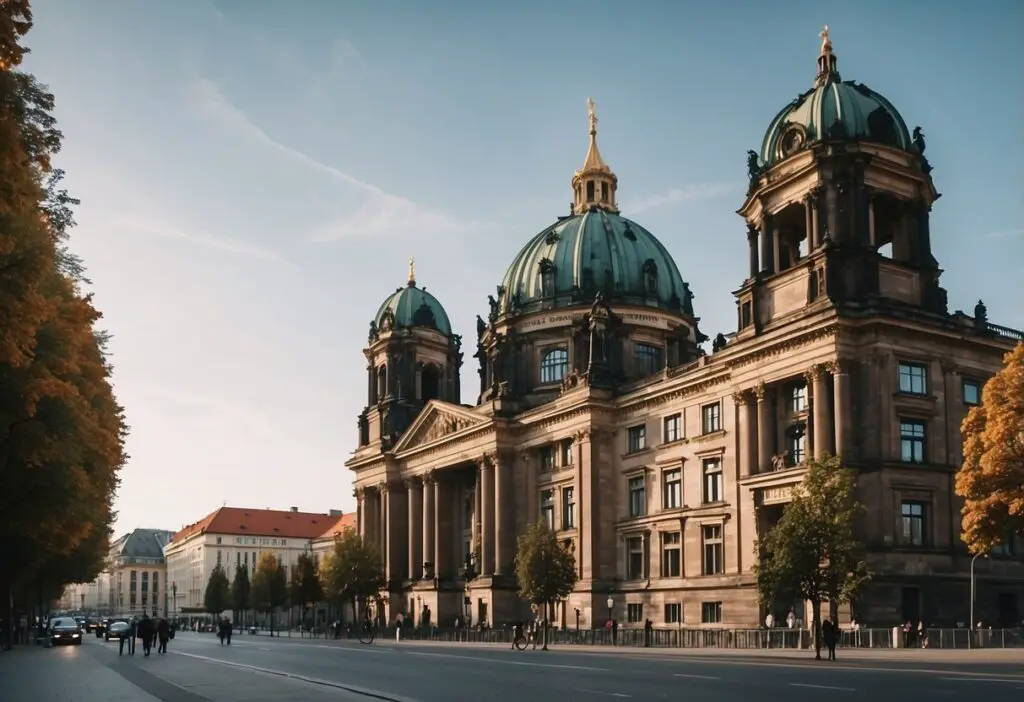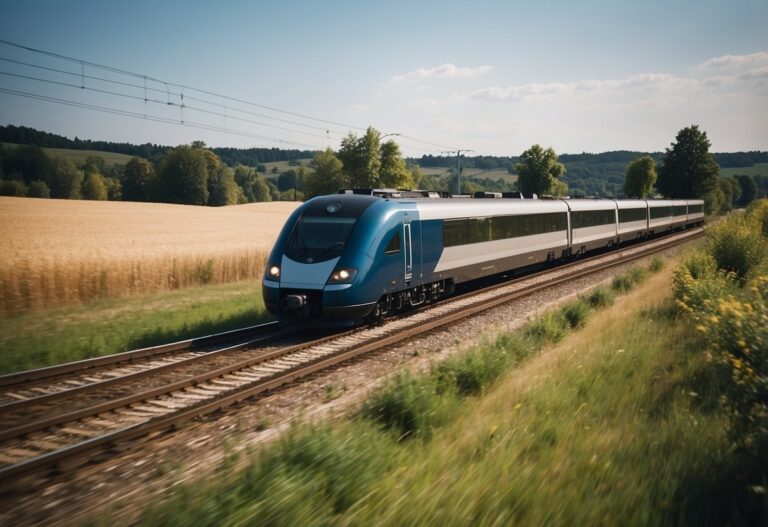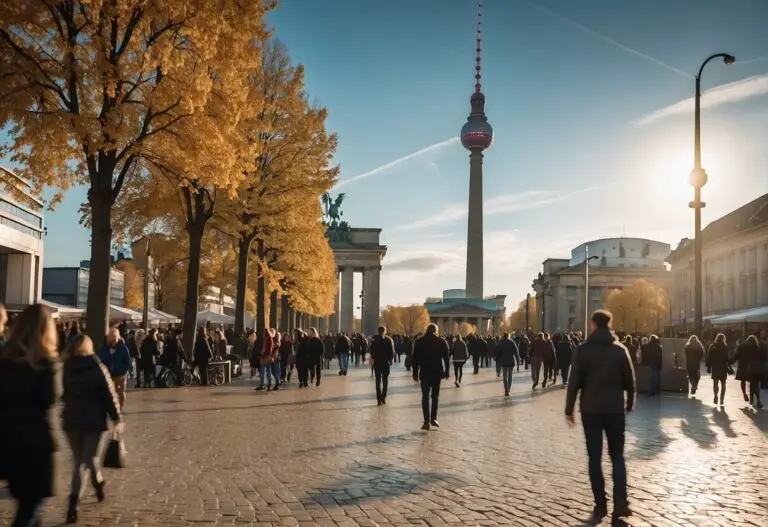Discover the architectural marvels that define the skyline of Germany’s capital in our guide to Berlin Buildings. From historic landmarks to cutting-edge modern designs, explore the diverse and dynamic structures that tell the story of Berlin’s past, present, and future. Join us as we uncover the must-see Berlin Buildings that make this city an architectural wonder.
Historical Foundations of Berlin Architecture

Prussian Legacy and Monuments
Berlin’s architectural identity began shaping in the age of Prussia. Strolling down the famed boulevard Unter den Linden, I witness the grandeur of neoclassical masterpieces like the Brandenburg Gate. Prussia’s cultural aspirations gave rise to monumental structures, including the Alte Nationalgalerie, which stands as a testament to a past where classical Greek and Roman influences were revered.
Impact of World War II and Reconstruction
Speaking of Berlin’s architecture, one cannot evade the impact of World War II. The Kaiser Wilhelm Memorial Church, punctured and partly in ruins, serves as a poignant reminder of war’s devastation. But I also see hope in the reconstruction efforts, where the city resurrected itself into a blend of modernist aesthetics, reflecting growth and a new vision for the future, encapsulated in the Jewish Museum Berlin and the Memorial to the Murdered Jews of Europe.
Government District and National Symbols
Dominated by the Reichstag building—the seat of the German Bundestag—the government district is a symbol of modern Germany. I admire the transparent dome atop the Reichstag, which illustrates the transparency of modern German democracy. Here, monumental architecture coexists with contemporary needs, linking deeply historical symbols like the Brandenburg Gate with present-day governance, binding Berlin’s past and present in a continuous dialogue.
Contemporary Structures and Urban Development

Architectural Modernism and Postmodernism
Berlin’s architecture presents a unique fusion of modern and postmodern influences. The city boasts the innovative designs of OMA at Alexanderplatz and modern landmarks like the Berlin Cathedral at Lustgarten. Unter den Linden hosts examples of modernist aesthetics leading up to the iconic Brandenburg Gate.
Cultural and Museum Landscapes
Museum Island, embraced by the River Spree, forms a cultural heart with breathtaking architecture like the Altes Museum. Adjacent to Pariser Platz, the Neue Nationalgalerie by Mies van der Rohe shares space with other brilliant 20th-century architectural works near Potsdamer Platz, like the Berlinische Galerie—rich with modern art collections.
Innovation in Skyscrapers and Landmark Buildings
The Fernsehturm (TV Tower) is a testament to Berlin’s skyscraper innovation. At Potsdamer Platz, the Sony Center signifies the new era of construction, while the Berliner Philharmonic by Hans Scharoun echoes a commitment to architectural excellence. Nearby, striking towers by Norman Foster and Daniel Libeskind contribute to the skyline.
Art, Memorials, and Exhibition Spaces

Berlin’s landscape is a rich tapestry of culture where art and history converge powerfully. From the bullet-riddled facades remembering the city’s turbulent past to the gleaming modern skyscrapers shaping its future, every Berlin building tells a story. The city’s memorials are profound reminders, while its exhibition spaces combine educational and cultural experiences.
Monuments and Memorials
Berlin reminds us of its history with poignant monuments and memorials. The Memorial to the Murdered Jews of Europe, a field of concrete slabs near the Brandenburg Gate, provokes deep reflection on the atrocities of World War II. Just a stone’s throw away, the Kaiser Wilhelm Memorial Church stands as both a ruin and a reminder of wartime destruction.
Exhibitions and Learning Centers
Museum Island, a UNESCO World Heritage site, is home to the Staatliche Museen zu Berlin, a group of museums showcasing treasures through the ages. In contrast, the Jewish Museum isn’t just about heritage; its architecture—a disjointed Star of David by Daniel Libeskind—reflects a fractured history.
Cultural Infusion in Public Spaces
The Bauhaus Archive celebrates the influential architectural school that defined 20th-century modernism. In Prenzlauer Berg, the Velodrom, designed by Dominique Perrault, offers a contemporary architectural experience, doubling as a historic cycling track and event venue. Hackesche Höfe, renowned for its art nouveau design, has transformed into a hive of cultural activity merging work and leisure.
What is the main building in Berlin?
The main building in Berlin is the Reichstag, which houses the German Bundestag (parliament) and features a striking glass dome.
What is the special building in Berlin?
A special building in Berlin is the Berliner Dom (Berlin Cathedral), known for its impressive architecture and stunning views from its dome.
What is the architecture style of Berlin?
Berlin’s architectural style combines historical and modern, including Baroque, Neoclassical, Bauhaus, and contemporary designs.
What is the most famous landmark in Berlin?
The most famous landmark in Berlin is the Brandenburg Gate, a symbol of German unity and peace, recognized worldwide.
If you liked this blog post about the topic: Berlin Buildings, don’t forget to leave us a comment down below to tell us about your experience with it.






